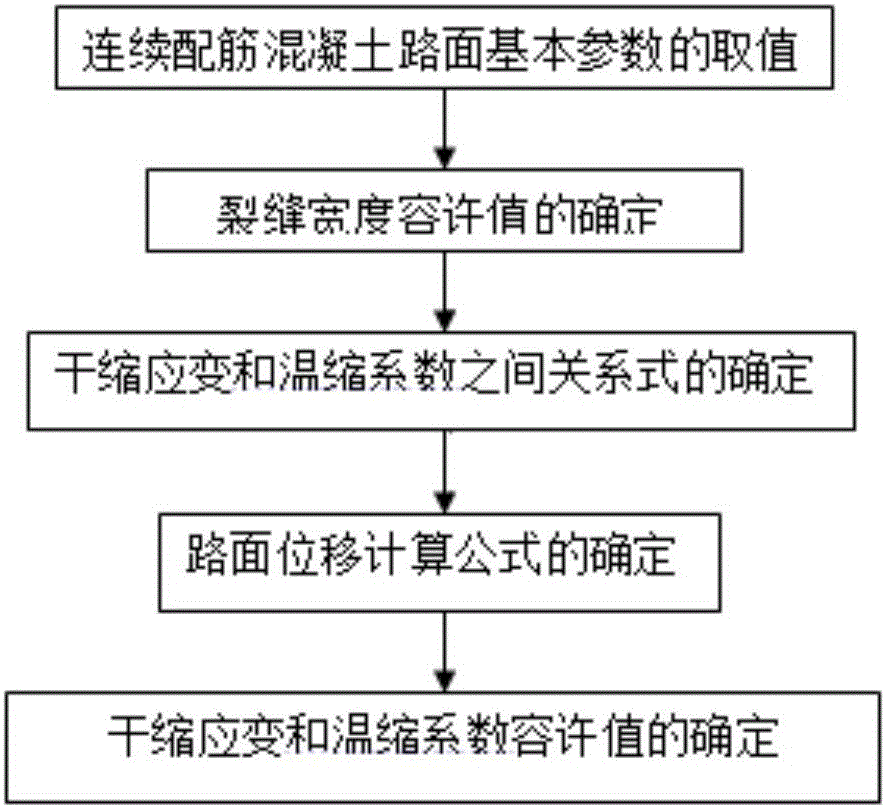Method for determining allowable value of dry shrinkage strain and temperature shrinkage coefficient of continuous reinforcement concrete
A technology of reinforced concrete and dry shrinkage strain, which is applied to the direction of coagulation pavement paved on site, roads, road reinforcements, etc., which can solve the lack of concrete dry shrinkage strain, the inability to control the width of CRCP cracks and the number of thrusts, and the inability to Optimal design and other issues
- Summary
- Abstract
- Description
- Claims
- Application Information
AI Technical Summary
Problems solved by technology
Method used
Image
Examples
Embodiment Construction
[0038] The present invention will be further described below in conjunction with accompanying drawing.
[0039] see figure 1 , the present invention comprises the following steps:
[0040] Step 1. The value of the basic parameters of the continuous reinforced concrete pavement:
[0041] That is, to determine the concrete elastic modulus E c =3×10 10 Pa, steel elastic modulus E s =2×10 11 Pa, steel bar diameter d s =0.016m, longitudinal steel bar spacing b=0.12m, steel bar temperature shrinkage coefficient α s =9×10 -6 / ℃, the bond stiffness coefficient k between steel bar and concrete s =3×10 10 Pa / m, frictional resistance coefficient k between the base layer and the surface layer c =5×10 7 Pa / m, temperature drop ΔT=30℃, crack spacing L=1.5m, cross-sectional area of reinforcement A s =2.01×10 -4 m 2 , concrete area A c =0.0288m 2 .
[0042] Step 2. Determination of the allowable value of the crack width:
[0043] With comprehensive reference to my country's...
PUM
| Property | Measurement | Unit |
|---|---|---|
| elastic modulus | aaaaa | aaaaa |
| diameter | aaaaa | aaaaa |
Abstract
Description
Claims
Application Information
 Login to View More
Login to View More - R&D
- Intellectual Property
- Life Sciences
- Materials
- Tech Scout
- Unparalleled Data Quality
- Higher Quality Content
- 60% Fewer Hallucinations
Browse by: Latest US Patents, China's latest patents, Technical Efficacy Thesaurus, Application Domain, Technology Topic, Popular Technical Reports.
© 2025 PatSnap. All rights reserved.Legal|Privacy policy|Modern Slavery Act Transparency Statement|Sitemap|About US| Contact US: help@patsnap.com



